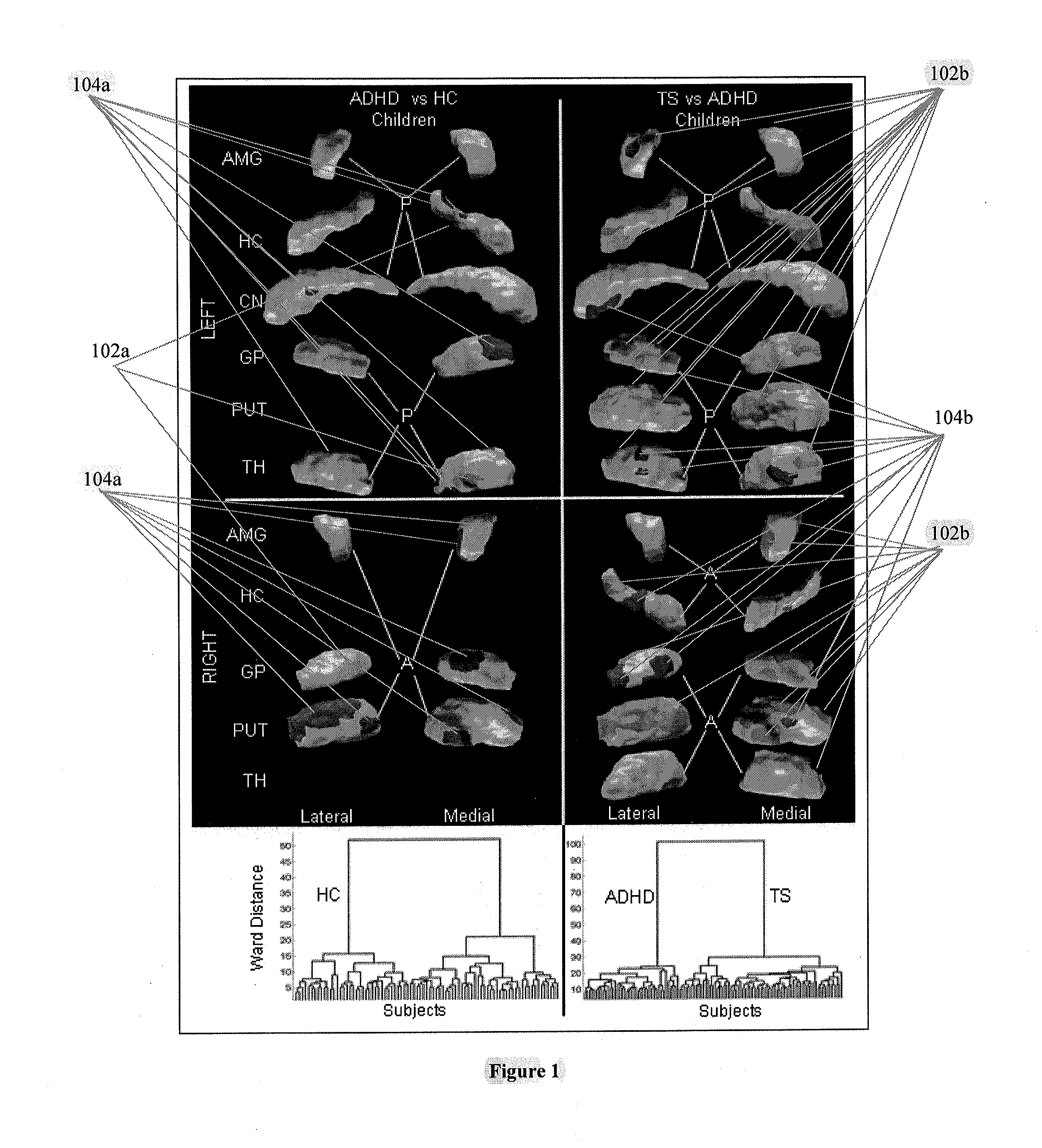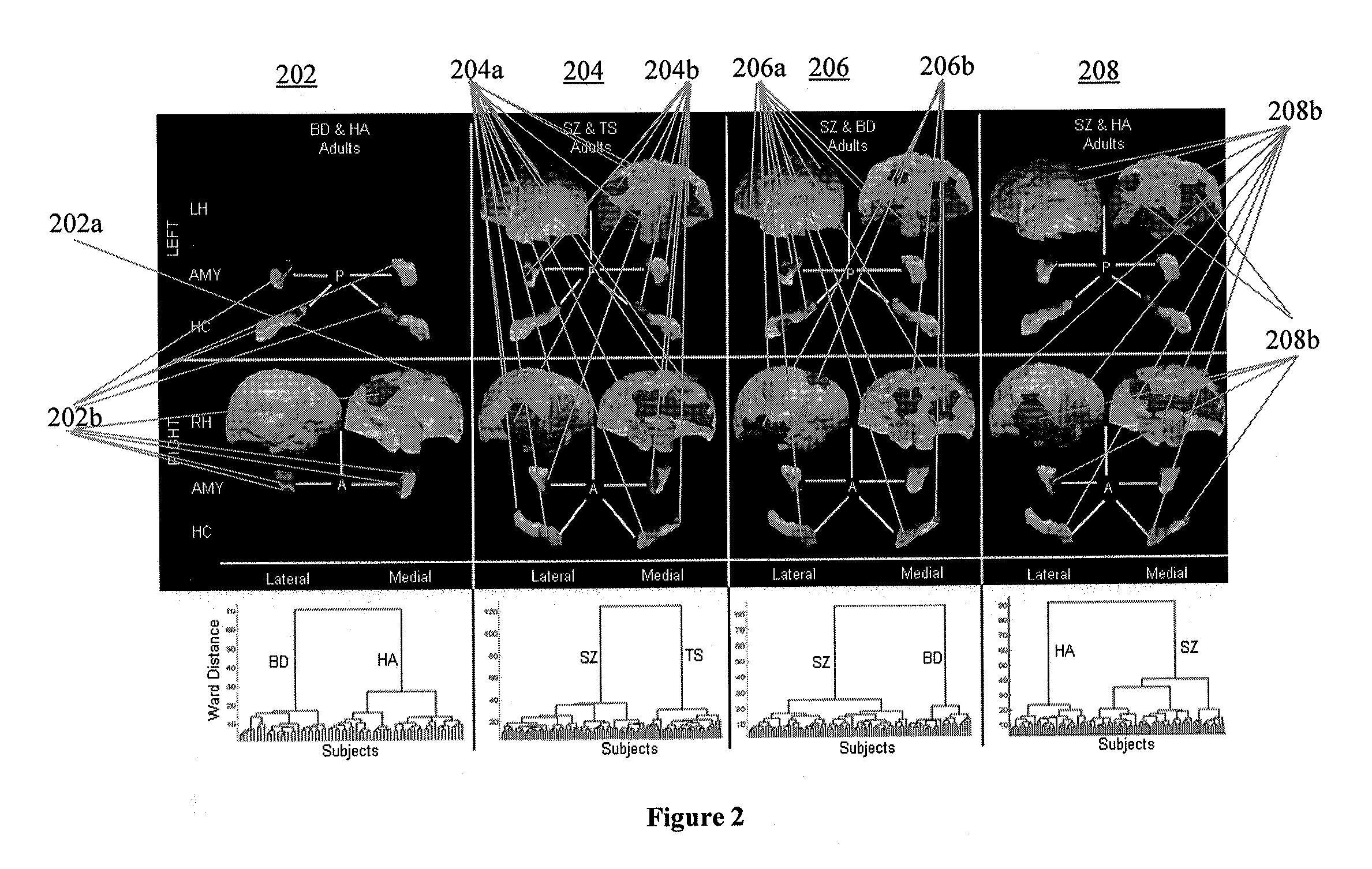Apparatus, method and computer-accessible medium for diagnosing and subtyping psychiatric diseases
a technology of psychiatric diseases and diagnostic methods, applied in the field of medical imaging, can solve the problems of poor sensitivity and specificity, substantial overlap between diagnostic groups in the distribution of overall volumes, and not proved particularly useful, so as to improve the accuracy of diagnosis, reduce costs, and high specificity
- Summary
- Abstract
- Description
- Claims
- Application Information
AI Technical Summary
Benefits of technology
Problems solved by technology
Method used
Image
Examples
Embodiment Construction
[0011]Exemplary embodiments of the present disclosure can provide diagnoses procedures using imaging-based measures, preferably alone, to improve the accuracy of the diagnosis, thereby reducing the costs associated with incorrect treatments. Exemplary methods, apparatus, and computer-readable medium can provide, for example, a semi-supervised learning procedure that can discover natural groupings of brains using, for example, the spatial patterns of variation in the morphology of the cerebral cortex and other brain regions. According to certain exemplary embodiments, split-half and leave-one-out cross-validation analyses can be used, for example, in large, human MRI datasets to assess the reproducibility and the diagnostic accuracy that those groupings provided. Exemplary embodiments of the present disclosure can facilitate, for example, discriminating the brains of persons who had one specific neuropsychiatric disorder from the brains of healthy participants and the brains of perso...
PUM
 Login to View More
Login to View More Abstract
Description
Claims
Application Information
 Login to View More
Login to View More - R&D
- Intellectual Property
- Life Sciences
- Materials
- Tech Scout
- Unparalleled Data Quality
- Higher Quality Content
- 60% Fewer Hallucinations
Browse by: Latest US Patents, China's latest patents, Technical Efficacy Thesaurus, Application Domain, Technology Topic, Popular Technical Reports.
© 2025 PatSnap. All rights reserved.Legal|Privacy policy|Modern Slavery Act Transparency Statement|Sitemap|About US| Contact US: help@patsnap.com



